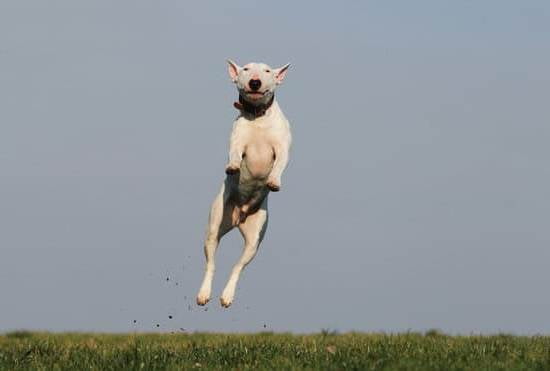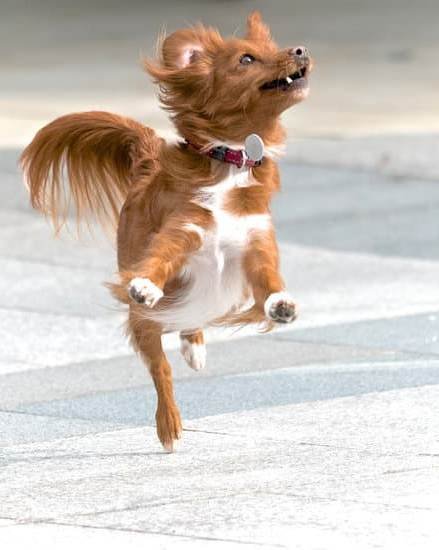Training your dog to use a litter box can be a convenient and beneficial solution for both pet owners and their furry friends. In this article, we will explore the advantages of using a dog litter box, and provide helpful tips and guidance on how to successfully train your dog to use it.
For many pet owners, the idea of training their dog to use a litter box may seem unconventional, but there are numerous benefits to this method. From providing a solution for apartment-dwelling dogs to offering an indoor potty alternative for elderly or disabled pets, a dog litter box can be a practical and hygienic option. Additionally, using a litter box can be especially advantageous during inclement weather or for pet owners with busy schedules.
In this section, we will delve into the various aspects of training your dog to use a litter box, including selecting the right type of litter box, setting it up correctly, positive reinforcement training techniques, handling accidents, establishing a routine, troubleshooting common issues, and maintaining cleanliness.
Whether you are a new pet owner or looking for an alternative potty training method for your dog, this comprehensive guide will provide you with the knowledge and tools needed for successful dog litter box training.
Selecting the Right Dog Litter Box
When it comes to selecting the right dog litter box, there are several factors to consider to ensure that it meets your needs and is suitable for your furry friend. One of the most important factors to consider is the size of the litter box.
It should be large enough for your dog to comfortably step into and move around in. Additionally, consider the height of the sides, especially if you have a small or senior dog who may have difficulty stepping over tall edges.
Another important consideration is the material of the dog litter box. There are various options available, including plastic, grass, and even automated systems. Each type has its own set of benefits and drawbacks, so it’s crucial to choose one that aligns with your dog’s preferences and needs. Additionally, think about whether you want a self-cleaning litter box or if you prefer a more traditional style that requires manual cleaning.
You should also take into account your living situation when selecting a dog litter box. If you live in an apartment or have limited outdoor space, a compact litter box that can be easily stored may be ideal. On the other hand, if you have a larger home or multiple dogs, you may need a bigger or multiple litter boxes strategically placed throughout your space.
| Factor | Consideration |
|---|---|
| Size | Large enough for comfortable movement |
| Material | Plastic, grass, automated system |
| Lifestyle | Living situation and storage space availability |
Setting Up the Dog Litter Box
When setting up a dog litter box, it is important to consider the location, size, and materials in order to create an appealing and effective space for your pet. The right set-up will make it easier for your dog to understand and use the litter box, ultimately leading to successful training.
Location
Choosing the right location for the dog litter box is crucial. It should be placed in a quiet and accessible area of your home where your dog feels comfortable. Avoid high-traffic areas or places with loud noises, as this may discourage your dog from using the litter box. Additionally, consider placing the box near a door for easy access when it’s time for outdoor bathroom breaks.
Size and Materials
The size of the litter box should be appropriate for your dog’s breed and size. It should be large enough for your dog to comfortably enter, turn around, and eliminate waste. When it comes to materials, consider using a durable and easy-to-clean option such as plastic or rubber. Some litter boxes come with grates that help separate solid waste from urine, making cleanup easier.
Overall, by carefully considering the location, size, and materials of the dog litter box, you can create a conducive environment that encourages your pet to use it regularly.
Training your dog to use a litter box requires patience and consistency but with the right setup in place like choosing the right location selecting appropriate size And using suitable materials you can make this process much easier Both you and your pet will appreciate having a designated spot for indoor elimination which adds plenty of convenience into both of your lives.
Positive Reinforcement Training
Here are some key steps to effectively train your dog to use the litter box:
1. Introduce the litter box: Start by placing the dog litter box in a specific location that is easily accessible to your dog. Allow your dog to become familiar with the box by sniffing and investigating it. You can also place some of your dog’s favorite toys or treats near the box to create a positive association.
2. Encourage exploration: When your dog shows interest in the litter box, offer verbal praise and rewards such as treats or playtime. This will help reinforce the idea that using the litter box is a desirable behavior.
3. Use positive reinforcement: Whenever your dog uses the litter box, immediately provide enthusiastic praise and rewards. Consistently reinforcing this behavior will help your dog understand that using the litter box is what you expect from them.
4. Be patient and consistent: Remember that every dog learns at their own pace, so be patient with the training process. Consistency is key – always reward your dog for using the litter box and never punish them for accidents outside of it.
With these positive reinforcement techniques, you can effectively train your dog to use the litter box while strengthening your bond with them at the same time. By remaining patient and consistent in your approach, you can set up your canine companion for success in their new bathroom routine.
Handling Accidents
Accidents are to be expected when training your dog to use a litter box, but with patience and consistency, you can address them and work towards preventing future ones. One important tip for addressing accidents is to avoid scolding or punishing your dog. This can create fear and anxiety, making it more difficult for them to learn. Instead, focus on positive reinforcement when they use the litter box correctly.
Another important tip is to clean accidents thoroughly using an enzymatic cleaner specifically designed for pet messes. This helps eliminate odors that may draw your dog back to the same spot. Additionally, consider adjusting the size or location of the litter box if accidents are occurring frequently in a specific area.
To prevent accidents in the future, maintain a consistent routine for potty breaks and reinforce good behavior with treats and praise. Remember that consistency is key when it comes to training your dog to use a litter box. With time and patience, most dogs can learn this new behavior.
When handling accidents during the training process, it’s crucial to monitor your dog’s behavior and make adjustments as necessary. Keep in mind that every dog is unique, so what works for one may not work for another.
| Tips for Addressing Accidents | Tips for Preventing Accidents |
|---|---|
| Avoid scolding or punishing your dog | Maintain a consistent routine for potty breaks |
| Use enzymatic cleaner to thoroughly clean accidents | Reinforce good behavior with treats and praise |
| Consider adjusting the size or location of the litter box | Monitor your dog’s behavior and make adjustments as necessary |
Establishing a Routine
Consistency Is Key
Consistency is essential when it comes to training your dog to use a litter box. Set specific times throughout the day for bathroom breaks and be sure to stick to them as closely as possible. This will help your dog understand when they are expected to use the litter box, making it easier for them to develop the habit.
Mealtime Bathroom Breaks
Dogs often need to relieve themselves shortly after eating or drinking. Take advantage of this natural behavior by scheduling bathroom breaks immediately following meal times. By doing so, you can encourage your dog to associate using the litter box with relieving themselves after meals.
Rewarding Good Behavior
When creating a schedule for dog litter box use, be sure to incorporate positive reinforcement techniques. Whenever your dog successfully uses the litter box at the scheduled times, reward them with praise, treats, or a favorite toy. This positive reinforcement will reinforce the desired behavior and encourage your dog to continue using the litter box consistently.
By establishing a routine for your dog’s litter box use, you can effectively train them to consistently use the designated area for relieving themselves. With patience, consistency, and positive reinforcement, you can help your dog understand when and where they should use their litter box, ultimately creating a cleaner and more convenient living space for both you and your furry friend.
Troubleshooting Common Issues
Training your dog to use a litter box can be a convenient and hygienic solution for both you and your pet. However, there may be some common issues that arise during the training process. Here are some tips for troubleshooting these problems and ensuring successful dog litter box training:
1. Consistency is key: One of the most common issues in dog litter box training is inconsistency in training methods or schedule. Make sure that you are consistently using positive reinforcement, taking your dog to the litter box at regular intervals, and providing ample opportunities for them to use it.
2. Addressing accidents: Accidents are bound to happen during the training process, but it’s important to address them promptly and effectively. When your dog has an accident outside of the litter box, clean up the area thoroughly to remove any lingering scent that may encourage repeat accidents.
3. Identifying barriers: Some dogs may have difficulty transitioning from outdoor potty habits to using a litter box indoors. If your dog seems hesitant or resistant to using the litter box, consider any potential barriers such as the size or location of the box, or even certain materials used.
Overall, troubleshooting common issues with dog litter box training requires patience, consistency, and careful observation of your dog’s behavior and response to the training process. By making adjustments as needed and providing positive reinforcement, you can help your furry friend successfully adapt to using a litter box for their bathroom needs.
Maintenance and Cleanliness
In conclusion, training your dog to use a litter box can be a convenient and effective solution for both you and your pet. By understanding the benefits of using a dog litter box and selecting the right one based on factors such as size, location, and materials, you can create a comfortable and functional space for your dog.
Positive reinforcement training is key to teaching your dog to use the litter box, and it’s important to handle accidents with patience and address any issues that may arise during the training process.
Establishing a routine for your dog’s litter box use is essential in maintaining consistency and preventing accidents. By creating a schedule and sticking to it, you can help your dog develop good habits. Additionally, being proactive in troubleshooting common issues with litter box training can help prevent setbacks in the process.
Finally, maintaining cleanliness in the dog litter box is crucial for keeping odors at bay and ensuring that your pet has a clean environment. Regular maintenance, such as cleaning the box and replacing the litter as needed, can go a long way in preserving hygiene. By following these tips and being patient with your dog throughout the training process, you can successfully teach them how to use a dog litter box.
Frequently Asked Questions
Can You Train Your Dog to Use a Litter Box?
Yes, it is possible to train a dog to use a litter box, but it is generally easier with small breeds or puppies. Consistency and positive reinforcement are key to successful training.
How Do You Set Up a Dog Litter Box?
Setting up a dog litter box involves choosing the right size box for your dog, placing it in an easily accessible area, and using the appropriate type of litter. It’s also important to clean the box regularly to maintain hygiene.
Can You Train an Old Dog to Use a Litter Tray?
While it may be more challenging to train an older dog to use a litter tray, it is still possible with patience and perseverance. Older dogs may take longer to learn new habits, so consistent training is essential.

Welcome to the blog! I am a professional dog trainer and have been working with dogs for many years. In this blog, I will be discussing various topics related to dog training, including tips, tricks, and advice. I hope you find this information helpful and informative. Thanks for reading!





